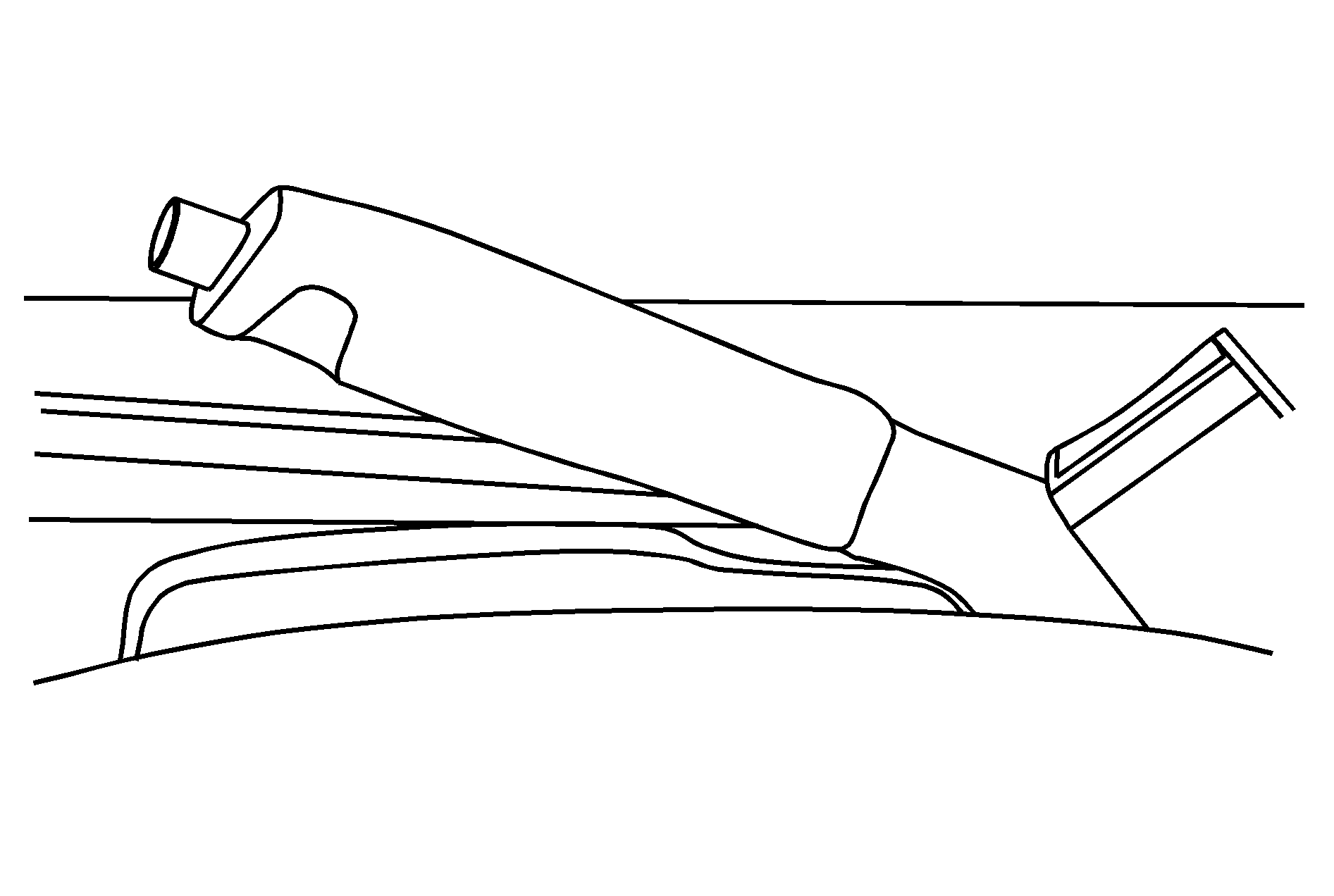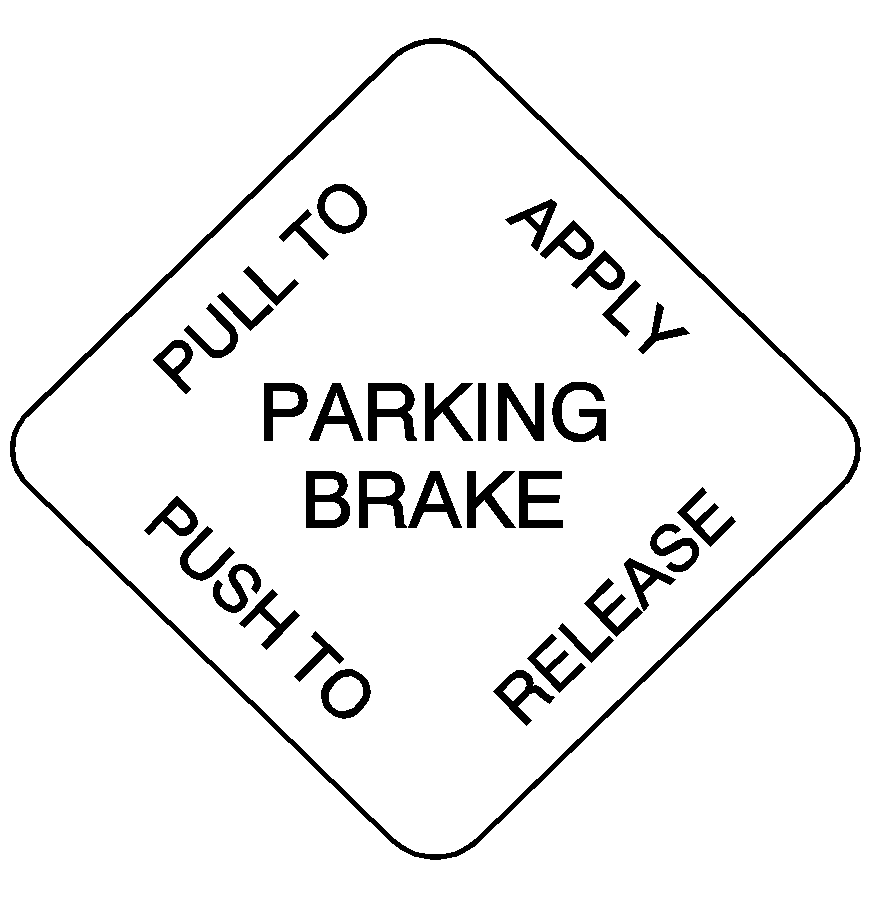Parking Brake With Hydraulic Brakes
If the vehicle has hydraulic brakes, it has a parking brake lever. The lever is located in the center console.
The vehicle may also be equipped with an automatic transmission which has a center console shift lever. This lever will have a P (Park) position on the shift indicator. Even when P (Park) is selected, be sure to apply the parking brake firmly so the vehicle will not move.
To apply the parking brake, pull the lever all the way up. The park brake light will come on when the parking brake is applied. See Brake System Warning Light for more information. Then shift the transmission to N (Neutral) for a manual transmission or P (Park) for an automatic transmission. The vehicle must be stationary when applying the parking brake, except while burnishing the parking brake linings. See Parking Brake Burnish Procedure for more information.

Once the parking brake is applied, slowly remove your foot from the regular brake pedal, while checking to see if the vehicle moves. If the vehicle does start to move, press the regular brake pedal and follow the parking brake burnish procedures. See Parking Brake Burnish Procedure for more information.
If the parking brake still does not set, take the vehicle to your dealer/retailer for service.
To release the parking brake, first push down the regular brake pedal. Then, while pressing in the release button, push the parking brake lever all the way down and shift the transmission to N (Neutral). The parking brake light will stay on if the parking brake is not fully released.
Notice: Driving with the parking brake on can overheat the brake system and cause premature wear or damage to brake system parts. Verify that the parking brake is fully released and the brake warning light is off before driving.
Parking Brake With Air Brakes

If the vehicle has air brakes, you will have this parking brake. It is located above the radio on the instrument panel.
Pulling it out applies the parking brake. The parking brake light will come on when the air parking brake is applied.
Vehicles built for use as tractors or towing vehicles have two air brake controls. They look like this:


Caution: When the yellow PARKING BRAKE and the red TRAILER AIR SUPPLY knobs are both pushed in, the rig will be free to move. It could strike someone or something. When both of these knobs are pushed in, hold the regular brake pedal down to keep the rig from moving.
To charge a trailer's air brake system do the following:
- Move the vehicle into the proper position.
- Apply the parking brake by pulling the yellow parking brake knob out.
- Hook up the trailer air system properly.
- Get into the vehicle.
- Push and hold down the regular brake pedal.
- Push in both the yellow parking brake and the red trailer air supply knobs. This will charge the trailer's air system.
After a few minutes, the trailer system should be fully charged. When it is, the air pressure gage will show about 125 to 135 psi (862 to 931 kPa). See Air Pressure Gage for more information.
For driving with a trailer, the yellow and red, if equipped, knobs must be pushed in. When you are not pulling a trailer, the red trailer air supply knob must be pulled out.
Caution: If you apply any one of the air brake parking controls while the vehicle is moving, the rig will stop suddenly. If you are not ready for this, you or others could be injured. Do not apply any one of these controls while you are driving, unless you have to make an emergency stop.
If the air pressure drops below 60 to 70 psi (413 to 482 kPa), the low air warning light and buzzer will come on. If the air pressure drops to 35 to 45 psi (241 to 310 kPa), the red trailer air supply knob will automatically pop out and apply the spring brakes on the trailer.
If the air pressure drops to 35 to 45 psi (241 to 310 kPa), the yellow park brake knob will automatically pop out and apply the spring brakes on the truck or tractor.
If you ever have a complete loss of air so that the air brakes automatically apply, there is a way that the tow operator can release the parking brakes to tow the vehicle. See Towing Your Vehicle.
